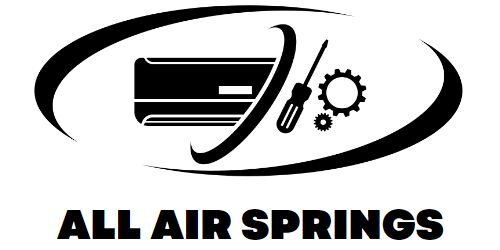Ultimate Guide to Heavy-Duty Truck Headlights: Types, Benefits, and Installation Tips
Introduction: The Importance of Quality Headlights for Heavy-Duty Trucks
When it comes to heavy-duty trucks, headlights are not just a convenience—they are a critical safety feature. Given the size and weight of these vehicles, as well as the long hours spent on the road, having reliable and powerful headlights is essential. Quality headlights provide better visibility, helping truck drivers navigate challenging roads, especially during the night or in low-visibility conditions like fog, rain, or snow.
For heavy-duty trucks, poor lighting can lead to dangerous situations, not only for the driver but also for others on the road. With a larger vehicle and often more cargo, heavy-duty trucks require headlights that can cover a wider area and reach greater distances. Ensuring that your truck is equipped with the right headlights also ensures that you remain compliant with safety regulations and minimize the risk of accidents.
Investing in the right lighting system for your truck can drastically improve safety, reduce eye strain during night driving, and improve the overall driving experience. In the following sections, we’ll explore the different types of headlights available, their benefits, and how to choose the best option for your truck.
Types of Heavy-Duty Truck Headlights
When selecting headlights for your heavy-duty truck, it’s essential to understand the different types available. Each type has its own advantages and is suited to specific driving needs. The three most common types of headlights are Halogen, HID (High-Intensity Discharge), and LED (Light Emitting Diode). Let’s explore each one in detail:
1.
Halogen Headlights
Halogen headlights are the traditional lighting option for trucks. They are affordable and easy to replace, making them a popular choice for many truckers. However, they are less energy-efficient compared to other options and have a shorter lifespan. Halogen lights typically produce a yellowish light and are less effective in poor visibility conditions.
2. HID Headlights
HID headlights offer brighter and more focused light than halogen bulbs. They produce a bluish or white light that mimics natural daylight, which is helpful for long-distance driving. While they are more energy-efficient than halogen bulbs, they can be expensive and may require additional components for installation.
3. LED Headlights
LED headlights are the newest and most advanced option. They are energy-efficient, have a long lifespan, and produce a bright white light that enhances visibility on the road. LED headlights are highly durable, resistant to vibration, and ideal for heavy-duty trucks that endure rough road conditions. While they can have a higher upfront cost, their benefits far outweigh the initial investment.
Choosing the right type of headlight depends on your specific needs, budget, and driving environment. The next chapter will dive deeper into the benefits of upgrading to LED headlights.
Benefits of Upgrading to LED Headlights
Upgrading to LED headlights is becoming an increasingly popular choice for truck owners. The numerous benefits they offer make them an excellent investment for heavy-duty trucks. Here are the main advantages of switching to LED headlights:
1.
Energy Efficiency
One of the standout features of LED headlights is their energy efficiency. LED lights consume far less power than traditional halogen or HID headlights. This reduces the overall load on the truck’s electrical system and can help save fuel over time, especially during long-haul trips.
2. Longevity
LED headlights are known for their durability. Unlike halogen bulbs, which typically last 500-1,000 hours, LEDs can last up to 25,000 hours or more. This longer lifespan means fewer replacements and reduced maintenance costs in the long run. Truck owners will appreciate the savings on frequent bulb changes.
3. Improved Visibility
LED headlights provide bright, clear, and consistent light, offering superior visibility on the road. The crisp white light helps truckers see farther and more clearly, which is especially valuable for night driving or during inclement weather conditions. Enhanced visibility contributes to overall road safety, reducing the likelihood of accidents.
4. Durability and Resistance to Vibration
Heavy-duty trucks often endure harsh road conditions and vibrations. LED headlights are designed to be shock-resistant and less prone to damage from rough roads, making them ideal for long-distance travel and off-road driving.
While the initial cost of LED headlights might be higher, the long-term benefits they offer in energy savings, durability, and improved visibility make them a worthwhile upgrade for any truck owner.
How to Choose the Right Headlights for Your Heavy-Duty Truck
Choosing the right headlights for your heavy-duty truck is essential for safety, performance, and compliance with road regulations. Several factors should be considered when making this decision. Here’s a breakdown of the key considerations to keep in mind:
1.
Type of Driving
Consider the conditions you drive in most frequently. If you often drive on poorly lit highways or in rural areas, brighter headlights such as LED or HID may be ideal for providing better visibility. If you mostly drive in city traffic, halogen headlights might be sufficient, as they provide ample light for short distances.
2. Beam Patterns
The beam pattern is crucial to ensure you’re not blinding other drivers or driving with insufficient light. Different types of beams (e.g., low beam, high beam, fog lights) serve different purposes. For example, a high beam is perfect for long-distance visibility on open roads, while low beams help prevent glare for other drivers.
3. Wattage
The wattage of the headlights determines their brightness. Higher wattage headlights generally offer more intense light, but they may require more power from your truck’s electrical system. For heavy-duty trucks, it’s important to find a balance between brightness and energy consumption, especially if you want to avoid overloading your system.
4. Certification and Regulations
Ensure that the headlights you choose are compliant with road safety standards, such as the Department of Transportation (DOT) regulations in the U.S. Using non-compliant headlights could result in fines or safety hazards. Always verify that your headlights meet the legal requirements in your area.
5. Budget
Headlight options vary widely in price. While LED headlights are more expensive upfront, their long lifespan and energy efficiency can save money over time. It’s important to consider your budget and weigh the long-term benefits of more expensive options like LEDs against the cost of traditional bulbs.
By considering these factors, you can make an informed decision about the best headlights for your heavy-duty truck, ensuring that you drive safely and efficiently while adhering to regulations.
Installation of Heavy-Duty Truck Headlights
Installing new headlights on your heavy-duty truck is a relatively straightforward process, but it requires attention to detail to ensure safety and optimal performance. Depending on your level of expertise, you can either tackle the installation yourself or hire a professional. Here’s a guide to help you through the installation process:
1.
Preparation
Before starting, make sure you have the necessary tools, which usually include a socket wrench, screwdriver, and possibly a headlight housing or mounting kit (depending on the type of headlight). Turn off the truck and disconnect the battery to avoid any electrical accidents during the installation.
2. Remove the Old Headlights
For most trucks, the first step is to remove the old headlights. This may involve unscrewing bolts or removing clips that hold the headlight assembly in place. Be sure to store any screws or fasteners carefully, as you will need them to secure the new headlights.
3. Install the New Headlights
Carefully place the new headlights into the mounting brackets or housing. If you’re installing LED or HID headlights, make sure to connect the wiring correctly—LED headlights often require specific connectors, so follow the manufacturer’s instructions. Once everything is aligned and connected, secure the new headlights with the original screws or clips.
4. Testing
After installation, reconnect the battery and test the headlights. Turn them on to check the alignment and functionality. Make sure the beam pattern is correct and that the headlights are securely in place. Adjust the angle if necessary to avoid blinding other drivers.
5. Professional Installation
If you’re unsure about the installation process or encounter complex wiring, it’s always a good idea to seek professional assistance. Professional installers will ensure that the headlights are mounted and wired correctly, preventing potential issues down the line.
By following these steps, you can successfully install new headlights on your truck and improve both its safety and visibility on the road.
Maintenance and Care for Truck Headlights
Proper maintenance of your heavy-duty truck’s headlights is crucial to ensure their longevity and performance. Over time, headlights can accumulate dirt, become misaligned, or even wear out. Here are some essential maintenance tips to keep your headlights in optimal condition:
1.
Regular Cleaning
Headlights can quickly become dirty due to road debris, dirt, and grime. Regular cleaning helps maintain their brightness and effectiveness. Use a soft cloth and a gentle cleaner to wipe away dirt. Avoid harsh chemicals or abrasive materials that could scratch the lens. For headlights with a cloudy or yellowed appearance, a specialized headlight restoration kit can help clear the lenses and improve light output.
2. Check for Damage
Inspect your headlights periodically for signs of damage, such as cracks, chips, or fogging. These issues can affect the headlight’s performance and visibility on the road. If the lens is cracked or fogged up, consider replacing the headlight or using a headlight restoration product to fix minor damage. For more severe issues, it’s best to replace the headlight altogether.
3. Ensure Proper Alignment
Over time, headlights may become misaligned, which can reduce their effectiveness and cause glare for other drivers. If you notice your headlights seem too high or low, it may be time to check their alignment. Many trucks allow for manual adjustment, or you may need to take the vehicle to a professional for realignment. Proper alignment ensures the headlights provide maximum visibility while preventing unwanted glare.
4. Check Wiring and Connections
Faulty wiring or loose connections can lead to flickering or dim lights. Regularly check the wiring harness and connections to ensure they are secure and free of corrosion. If you find any damaged wires, replace them promptly to avoid further electrical issues.
5. Replace Worn-Out Bulbs
While LED and HID bulbs last longer than traditional halogen bulbs, they still may eventually need to be replaced. Pay attention to any dimming or flickering that might signal the need for a new bulb. Replacing worn-out bulbs promptly ensures your truck always has reliable, bright headlights for safe driving.
With these maintenance steps, you can prolong the life of your headlights and ensure they continue performing at their best, providing the visibility and safety you need while on the road.
Legal Requirements and Regulations for Truck Headlights
When it comes to heavy-duty trucks, proper lighting is not just a safety concern—it is also a matter of legal compliance. Different regions have specific regulations regarding headlight types, brightness, and alignment to ensure road safety for all drivers. Understanding and adhering to these regulations is crucial for truck owners to avoid penalties and ensure safe driving conditions.
1.
DOT (Department of Transportation) Standards
In the United States, the Department of Transportation (DOT) sets strict guidelines for vehicle lighting, including truck headlights. DOT-approved headlights must meet specific brightness and beam pattern requirements to prevent accidents caused by poor visibility or glare. Be sure to look for the DOT seal of approval on any headlights you purchase to ensure they meet these safety standards.
2. Headlight Brightness Regulations
Many regions have regulations regarding the maximum allowable brightness for truck headlights. Overly bright headlights can cause glare for other drivers, making it difficult for them to see the road clearly. It’s essential to ensure that your headlights fall within the legal brightness limits for your area. Failing to comply with brightness standards can result in fines or equipment violations.
3. Beam Patterns and Headlight Positioning
Regulations also dictate the appropriate beam patterns for headlights. For instance, low beams are required for city driving to reduce glare, while high beams can be used on rural or poorly lit roads. Furthermore, headlights must be positioned at certain heights to prevent blinding other drivers. Always verify the alignment and positioning of your truck’s headlights to meet legal requirements.
4. State-Specific Regulations
In addition to federal guidelines, many states or countries have their own specific regulations regarding headlights. These laws may include additional requirements for fog lights, driving lights, or light color. For example, some areas may only permit white or yellow headlights, while others may allow certain colored lights for off-road use. Always research the specific rules for your region to stay compliant.
5. Vehicle Inspections
Many regions require regular vehicle inspections to ensure all lighting components are functioning correctly and meet safety standards. Make sure your headlights are inspected during routine maintenance to avoid any legal issues or safety risks. This inspection process may also check the alignment, brightness, and condition of your headlights.
By ensuring your headlights are compliant with legal requirements and regulations, you can enhance safety, avoid fines, and enjoy peace of mind on the road. Always stay up to date with the local laws regarding truck lighting to ensure full compliance.
Conclusion: Enhancing Road Safety with the Right Heavy-Duty Truck Headlights
Choosing the right headlights for your heavy-duty truck is a critical decision that directly impacts your safety, the safety of others on the road, and your overall driving experience. Whether you are upgrading to more advanced LED headlights, replacing worn-out bulbs, or simply ensuring that your truck complies with legal standards, the benefits are clear.
1.
Improved Visibility
One of the most significant advantages of upgrading your headlights is the enhanced visibility they provide. With better lighting, especially at night or in poor weather conditions, you can see further and more clearly, reducing the risk of accidents. High-quality headlights allow you to spot potential hazards early, giving you more time to react.
2. Long-Term Savings
While the initial cost of LED or HID headlights may be higher than traditional halogen options, they offer long-term savings through improved energy efficiency and durability. LED headlights, in particular, can last much longer than halogen bulbs, reducing the need for frequent replacements and lowering maintenance costs.
3. Compliance with Regulations
Adhering to legal requirements regarding truck headlights is not just a matter of avoiding fines—it’s about ensuring that your vehicle is roadworthy and safe for both you and other drivers. By selecting DOT-approved headlights and making sure they are properly aligned and positioned, you can avoid unnecessary legal issues and stay compliant with regional laws.
4. Enhanced Safety
Ultimately, the goal of investing in the right headlights is to enhance road safety. Properly functioning headlights help prevent accidents by ensuring maximum visibility and reducing the chances of headlight-related safety hazards. Whether you’re driving on highways or through difficult terrain, high-quality headlights will help keep you safe.
In conclusion, choosing, maintaining, and upgrading your heavy-duty truck headlights is a wise decision that benefits your safety, your vehicle’s longevity, and the safety of others on the road. Investing in quality lighting systems will ensure you get the most out of your truck and enhance your driving experience, mile after mile.
For detailed information, you can contact us at torqueusa.com


